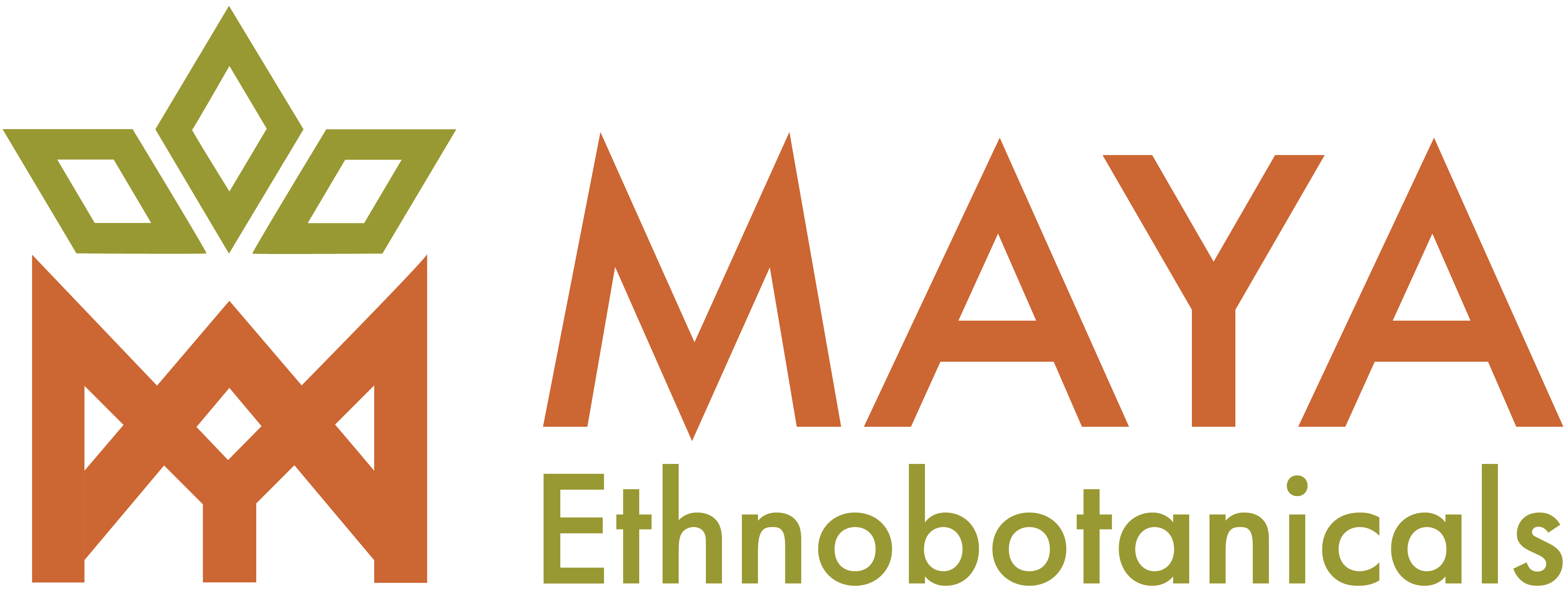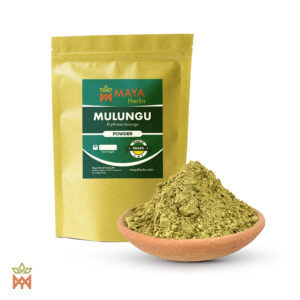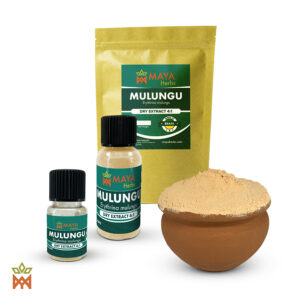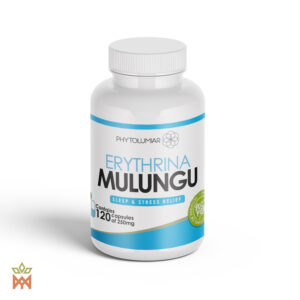Showing all 5 results
- € 7,40 – € 94,40Price range: € 7,40 through € 94,40 Incl. VATSelect options This product has multiple variants. The options may be chosen on the product page
- € 4,50 – € 42,00Price range: € 4,50 through € 42,00 Incl. VATSelect options This product has multiple variants. The options may be chosen on the product page
- € 7,50 – € 94,40Price range: € 7,50 through € 94,40 Incl. VATSelect options This product has multiple variants. The options may be chosen on the product page
- € 23,50 Incl. VATSelect options This product has multiple variants. The options may be chosen on the product page
Showing all 5 results
Discover the Natural Tranquility of Mulungu
Mulungu, scientifically known as Erythrina mulungu, is a beautiful tree native to the diverse ecosystems of Brazil and other parts of South America. Revered for its striking appearance and therapeutic properties, Mulungu has been used traditionally by indigenous cultures for centuries to promote relaxation and well-being.
What is Mulungu?
Mulungu is a deciduous tree that can reach heights of up to 14 meters. It is easily recognized by its bright orange flowers and cork-like bark, which are not only visually striking but also rich in medicinal compounds. The tree belongs to the Erythrina family, which is known for its variety of species with similar properties.
Mulungu Benefits
Traditionally, Mulungu has been used to help manage anxiety and stress, thanks to its natural calming properties. It is also often used to promote natural sleep, making it a popular alternative for those seeking a restful night without the use of synthetic medications. Additionally, Mulungu is said to support heart health and maintain healthy blood pressure levels within a normal range.
Where Does Mulungu Come From?
Mulungu is primarily found in Brazil, where it thrives along the edges of rivers and lakes in the tropical northern regions. The unique soil and climatic conditions of its native habitat contribute to the plant’s unique chemical makeup, which is rich in flavonoids and alkaloids believed to be responsible for its calming effects.
Botanical Information
Botanically, Erythrina mulungu is characterized by its rugged, corky bark and large, feather-like leaves. The tree produces vibrant, coral-red flowers that not only attract local wildlife but have also made it a subject of interest in botanical gardens and natural remedies alike.
How to Use Mulungu
Mulungu is typically used in the form of a tea or tincture. To make Mulungu tea, the bark or flowers of the tree are boiled in water to extract the active ingredients. For those who prefer convenience, tinctures or extracts can also be used, which provide a more concentrated dose of the herb's properties and can be taken directly or added to water.
Buy Mulungu
When looking to buy Mulungu, choosing high-quality sources is crucial to ensure you receive the most benefit from this powerful natural remedy. At Maya Herbs, we offer the finest Mulungu, directly sourced from Brazil, ensuring that our products are pure and sustainable. Our direct relationship with local harvesters allows us to provide a premium product while supporting sustainable practices and the communities involved in its cultivation.
By purchasing from Maya Herbs, you not only get the best quality Mulungu available but also contribute to ethical sourcing practices that respect both the environment and the local economy. Our commitment to excellence ensures that every batch of Mulungu we offer meets the highest standards of purity and potency.
Mulungu is a remarkable natural remedy, known for its soothing properties and beautiful presence in the natural world. At Maya Herbs, we are proud to bring you the best of Brazil’s botanical treasures, providing a trusted source for Mulungu that supports both your health and the planet. Experience the calming benefits of Mulungu and embrace a more tranquil lifestyle with our ethically sourced, high-quality products.
Pharmacological information and studies
Scientific Name: Erythrina vellutina Willd.Scientific Synonymy: Erythrina aculeatissima Desf.; Erythrina splendida Diels.
Common Name: Bocare in the Antilles; Bucare, pericoa, pericoco in Venezuela; Canivete, corticeira, sananduva, suína or sauinã.
Family: Fabaceae-Faboideae.
Used Part: Bark.
Chemical Composition: Alkaloids, tannins, flavonoids, and isoflavonoids, erivelutinone, 3'-O-methylsigmoidine, phaseolidine, and homohesperetin. The micronized powder extract must contain at least 0.5% total tannins.
Molecular Formula: N/A Molecular Weight: N/A
CAS: N/A
DCB: N/A
DCI: N/A
Deciduous tree, with an open and rounded canopy, very floriferous and ornamental, spiny, 6 to 12 m tall. Compound trifoliate leaves, alternate and leathery, velvety-pubescent leaflets, measuring 3 to 12 cm in length. Large coral-red flowers arranged in racemose panicles with a powdery rachis, formed when the tree is completely devoid of its foliage. Fruit is a dehiscent legume (pod) 5 to 8 cm long, containing 1-3 uniform, shiny red seeds. It is native to the northeastern caatinga of Brazil and the São Francisco Valley, very ornamental when in bloom and occasionally used in landscaping. Other species of this genus with similar characteristics and the same popular name occur in other regions of the country.
Antimuscarinic and CNS depressant properties consistent with the popular medicinal uses of this plant. Its phytochemical analysis also showed the presence of various alkaloids commonly found in species of Erythrina.
Indications and Pharmacological Action
The dry extract of Mulungu contains pharmacologically active constituents with central action. Mulungu is popularly used in Brazil as a tranquilizing agent, and it was studied in rats in a laboratory model of anxiety induction. The results suggest that Erythrina vellutina exerts an anxiolytic effect, particularly in defensive behaviors associated with generalized anxiety disorders.
In a preliminary study with Mulungu extracts, antibacterial activity of the plant extract against Streptococcus pyogenes and Staphylococcus aureus was demonstrated. Moderate activity was recorded against all microorganisms in the minimum inhibitory concentration test – MIC for the crude extract and hexane fraction of E. velutina bark.
Pharmacological studies in laboratory animals found significant spasmolytic activity of its extract and curarizing activities.
Preparations of its bark are attributed with sudorific, calming, emollient, and pectoral properties. The bark infusion is used as a sedative and cough suppressant, and for treating bronchitis, worm infections, and hemorrhoids. The decoction is used to accelerate the maturation of abscesses in the gums.
Toxicity/Contraindications
Curarizing, antimuscarinic, and CNS depressant.
The use of Mulungu may potentiate the effect of anxiolytics.
Dosage and How to Use
Internal use:
- Shredded (Infusion or decoction): 2 g, 1 to 2 cups per day;
- Partially Soluble Dry Extract (P.S.): 200 mg twice a day;
- Powder: up to 12 g per day;
- Fluid Extract: 1 to 4 mL per day;
- Tincture: 10 to 20 mL per day, divided into two or three daily doses, diluted in water.
- Mother Tincture: 20 to 40 mL per day, divided into two or three daily doses, diluted in water.
External use:
- Glycolic Extract: In creams, gels, and lotions - 3 to 10%. In shampoos, conditioners, liquid and bar soaps, and bubble baths - 2 to 5%.
References
ÁVILA, L. C. Índice terapêutico Fitoterápico ITF. Ervas medicinais 2nd ed. Petrópolis-RJ. 2013.
CORRÊA, M. P. Dicionário das Plantas Úteis do Brasil. IBDF. 1984.
LORENZI, H; MATOS, F.F.A. Plantas Medicinais no Brasil. Instituto Plantarum de Estudos da Flora Ltda. 2002.
RAUPP, I. F. M. Efeito Ansiolítico da Administração Prolongada do Extrato de Erythrina vellutina no Labirinto em Cruz Elevado. 2006.
RIBEIRO, M. D. et al. Effect of Erythrina velutina and Erythrina mulungu in rats submitted to animal models of anxiety and depression. Brazilian journal of medical and biological research, v. 39, n. 2, p. 263-270, 2006.
TESKE, M.; TRENTINI, A M.M. Herbarium – Compêndio de Fitoterapia, 3rd revised edition, Curitiba.





